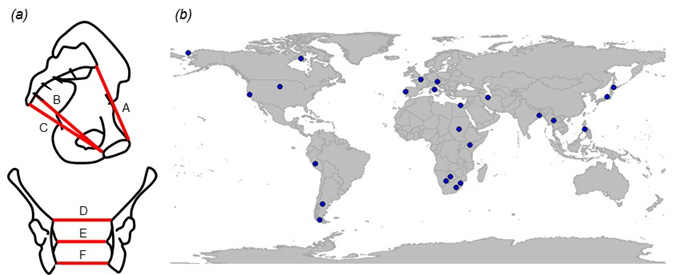Submitted by Administrator on Wed, 24/10/2018 - 10:25
The human birth canal is just large enough for the newborn, making childbirth a difficult and often dangerous process. In a new paper by Lia Betti, Roehampton University, and Andrea Manica, from our department, show that there are significant differences in birth-canal shape among populations.
These variations correlate with genetic differences among populations, suggesting that they have been shaped by ancient waves of global migration. Climatic adaptation might also explain why high-latitude populations tend to have a wider pelvis. In showing significant variation in canal shape among women from different regions of the world, this study has important implications for obstetric training and practice in multi-ethnic societies.
The human birth canal shows a tight fit with the size of the neonate, which can lead to obstetric complications. This is not the case in other apes, and has been explained as the outcome of conflicting evolutionary pressures for bipedal locomotion and parturition of a highly-encephalised fetus. Despite the suggested evolutionary constraints on the female pelvis, Betti and Manica show that women are, in fact, extremely variable in the shape of the bony birth canal, with human populations having differently-shaped pelvic canals.
Neutral evolution through genetic drift and differential migration are largely responsible for the observed pattern of morphological diversity, which correlates well with neutral genetic diversity. Climatic adaptation might have played a role, albeit a minor one, with populations from colder regions showing a more transversally oval shape of the canal inlet. The significant extent of canal shape variation among women from different regions of the world has important implications for modern obstetric practice in multi-ethnic societies, as modern medical understanding has been largely developed on studies of European women.

The paper, published today, in Proceedings of the Royal Society B: Human variation in the shape of the birth canal is significant and geographically structured. Lia Betti, Andrea Manica. DOI:10.1098/rspb.2018.1807
Further coverage can be found in Science
